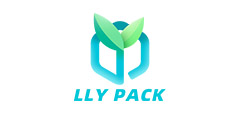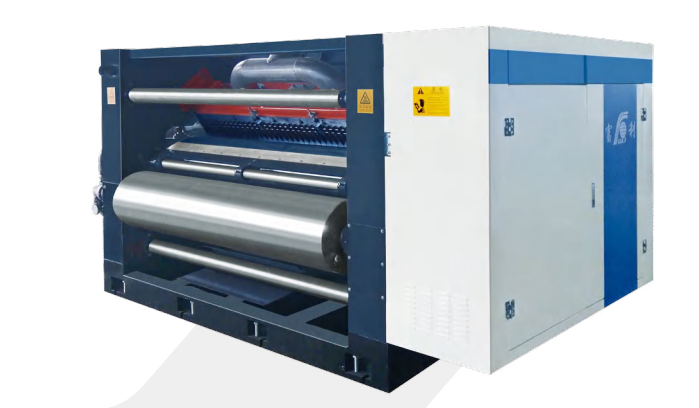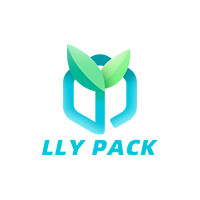One person in the industry said that flexo printer has grown into a mature country abroad, but is still a baby in China. This analogy is appropriate! Indeed, China's flexographic printing is still in its infancy, but she has already shown her tenacious vitality. We believe that Flexo Printer Slotter will be of great use in the field of flexible packaging
1 Application status of Advanced Flexo Printer in the field of flexible packaging
According to statistics from relevant departments, at present, domestic packaging and printing companies have introduced flexo printing machines (including narrow and wide format) from abroad and domestically developed and produced narrow-format flexo printing machines with a total of nearly 240 production lines (including 170 imported lines, 70 domestic lines). These production lines are distributed all over the country, among which there are many production lines in Shanghai, Beijing, Zhejiang, Guangdong, Shaanxi and Yunnan. There are already eight domestic printing machine manufacturers in China that have started to produce narrow-format flexo printing machines. In 2001, the output value of packaging and printing nationwide was approximately 50 billion yuan, and the share of flexo printing in it has risen from 3% in previous years to 7%. According to the situation of China's printing industry equipment and the characteristics of flexographic printing, the development goal of flexo printing in 2010 is that the proportion of flexo output value in all packaging printing output value will rise to 15%.
The progress made by flexo printing in China in recent years mainly includes the following aspects:
1) Flexographic printing can basically meet the needs of packaging printing. After many years of production practice, flexo printing has established its own position in China's packaging and printing market, and its market share is gradually increasing, but the proportion of plastic flexible packaging flexo printing using satellite flexo printing machines is still very small. In addition, some international multinational companies based in Shanghai and Beijing have realized that flexo printing uses ink and water printing. The printed products are pollution-free, which is beneficial to health and environmental protection. The quality of products will win the recognition of customers. Therefore, Nestlé, Johnson & Johnson , KFC and other famous brand companies have used flexo product packaging. Some purchasing supervisors of foreign companies, for the sake of flexo printing is green printing, must give orders to companies with flexo printing equipment for printing. Facts have proved that the flexo printing process can not only meet the needs of packaging in terms of quality, but also cooperate with mechanized packaging to improve production efficiency and reduce production costs.
2) In recent years, the quality of flexo products in China has improved significantly.
3) Most enterprises have mastered the flexo process technology, and the operation proficiency is gradually improving. The flexo printing process and operation technology are completely different from gravure printing. Most domestic flexible packaging manufacturers that introduced flexo printing equipment used to use gravure printing equipment. Therefore, at the initial stage of production, it was difficult for the manufacturers to grasp the characteristics of flexo printing. Some quality problems caused a lot of waste products.
4) Some enterprises have achieved good economic benefits. These flexo printing companies have one common characteristic: sufficient source of life, stable product quality, high equipment utilization rate, and relatively good economic benefits. For example: Shandong Xinhua, Shanghai No. 8 Printing Factory, etc.
5) Domestic flexo printing machines and supporting materials have been developed. Because of the rapid development of flexo technology in China, it has driven the development and production of domestic flexo printing machines, anilox rollers, plate materials, inks and other supporting equipment. So far, there are 10 domestic manufacturers that can produce flexo printing machines: Xi'an Black Bull, Shaanxi Beiren, Shanxi Taihang, Shanghai Ziguang, etc.
2 The advantages of flexible printing in flexible packaging
The difference between flexographic printing and other printing methods lies in its unique characteristics. First, it uses soft polymer resin plate materials (such as Cyrel plates produced by DuPont), which reduces the cost of plate making and shortens the cycle of plate making compared to gravure printing. And, due to the improvement of plate manufacturing level and plate-making technology, the screen version can now reach the level of 175 lines, which is enough to meet the needs of general packaging and printing. It is also a metering roller for ink, which achieves the same short ink path as gravure printing, and can supply ink accurately according to the process requirements. At present, the cermet anilox roller with laser engraving can reach the level of 1600 lines. For precise control of ink color and The thickness of the ink layer provides an advantageous means; the third is small pressure printing, which not only reduces the vibration and wear on the machine, but also reduces the wear on the plate, and also expands the range of printing media, especially for flexible materials ; Fourth, the narrow-width flexographic printing machine can complete a large amount of post-press processing in addition to printing, making the flexographic printing machine a production line integrating printing and post-press processing The comparison of flexo printing and gravure printing is shown in Table 1.
The advantages of flexographic printing in flexible packaging are:
1) Thick ink layer and consistent ink color.
2) Widely used non-toxic water-based ink printing. Flexo ink is the only non-toxic ink approved by the American Food and Drug Association among all printing methods. Therefore, flexographic printing is also known as green printing, and is widely used in food and pharmaceutical packaging, which is inferior to other printing methods such as gravure printing. The investment is significantly lower than that of gravure printing machines of the same size.
3) Wide range of printable media. Flexo printing machines can print paper, and can also print aluminum foil, plastic film, self-adhesive film, cellophane, etc. There are more types of substrates than gravure printing.
4) Strong comprehensive processing ability of equipment. Almost all narrow-frame flexo printing machines can perform post-printing processing on the same equipment, such as reverse printing, glazing, laminating, die cutting, transverse cutting, slitting, punching, etc.
5) Low production cost and high economic benefit. Compared with the gravure printing method commonly used in flexible packaging, the plate making cycle is short and the plate making cost is low: the ink consumption is less than gravure printing; the power consumption is less; the printing speed is fast, and the maximum printing speed of the flexo printing machine can reach 600m / min; The rate is lower than that of gravure printing; it occupies less production space; and the comprehensive processing ability is strong, forming at one time, saving the labor of the next process; avoiding the waste of turnover between processes, so the comprehensive production cost is low.
6) Under production investment. Due to the relatively simple structure of the flexographic printing machine, the equipment investment is significantly lower than that of the gravure printing machine of the same scale.
In summary, most of the products printed by the gravure printing method can use flexographic printing, and can reach or approach the quality level of gravure printing. On the contrary, some products printed by the flexographic printing machine cannot be printed by gravure printing. In terms of use cost, the flexographic printing method is much lower than the gravure printing method. Undoubtedly, the use of flexo printing for flexible packaging printing is a wise choice for low input and high output.
3 The "bottleneck" encountered by flexible printing in the flexible packaging industry
A few years ago, there were two very extreme views. One said: flexo is too good, in the future it will replace gravure printing, and even replace offset printing; second said: flexo is too bad, can only print very poor products. Both of these claims are biased. In order for China's flexographic printing to achieve healthy and rapid development in the flexible packaging industry, it is necessary to solve the following problems in the development of flexo and gravure from the understanding and practice.
1) Insufficient live sources for some companies
Flexo printing is suitable for mass production and continuous production of printed products. If the printing volume is small and the printing quality is unstable, it will lead to increased costs and waste. At present, there are still some flexible packaging enterprises engaged in the production of flexo printing in China. Due to insufficient living sources, insufficient production tasks, and low equipment utilization, they are in a state of insufficient construction and "waiting for the rice".
2) Unreasonable equipment selection
The introduction of flexo printing equipment should first consider the objects to be printed by the flexo printing machine, and should fully understand the structure and performance of the flexo printing machine to ensure that the equipment configuration is reasonable and meets the requirements of flexo printing. In the previous period, some companies only considered the price factor when choosing a flexo printing machine, ignoring whether the configuration was suitable and reasonable. As a result, due to improper configuration, some printed products could not be printed.
3) The supply channel of auxiliary materials is poor
Most of the flexographic printing auxiliary materials (except ink and ink) in China are imported from abroad, such as plates, double-sided tape, doctor blades, etc., which are not only expensive, but also have long delivery periods, few domestic sales agents, and incomplete specifications. The user has no choice, which is the key to hinder the development of flexo printing. The domestic flexo ink types are relatively complete, both of which can be suitable for various types of printing materials, and the latest anti-counterfeiting inks. It should be said that they have developed rapidly. The requirements for the fineness, fluidity, viscosity and other characteristics of water ink vary with different printing materials. Therefore, the development of corresponding inks for specific printing materials and different printing processes is to improve the quality of flexo products, reduce the rate of waste products, and broaden flexo printing. An important way to market. At present, high-quality fine water-based gold and silver inks and UV inks are almost dependent on imports, and the prices are relatively high.
4) The flexo printing process is not yet well mastered
Most flexible packaging plants are familiar with the gravure printing process, but relatively unfamiliar with the flexo printing process. After the introduction of the flexo process, the internal structure and management of the enterprise must be adjusted accordingly. Common faults of flexo printing include poor ink, dry plate, paste plate, edge defects, inappropriate pressure, graphic deformation, dimensional displacement, etc. To solve these problems, in addition to equipment and material factors, you must also pay attention to the anilox roller Matching, the pressure between the anilox roller and the printing plate, the pressure between the printing plate and the impression cylinder, the relationship between the ink viscosity and the machine speed, etc. Without a set of data and operating procedures, it is difficult to print a good product. The current flexo industry should not only have its own printing experts, but also platemaking experts and ink and wash experts.
5) Flexographic platemaking process
Flexo is mainly divided into two categories with and without base. The thickness of the plate with a base material is about 0.95 ram, and the thickness of the plate without a base material is 1.7 ram, 2.28 ram, 3.94 mm, 7 ram, etc. When making a plate, the back exposure is performed first, and then the main exposure. The exposure time varies according to the pattern level and climate. After sensitization, the unexposed part can be rinsed and removed, and then debonded and dried, and a printing plate can be taken in just 2 hours. The recently adopted flexo CTP with lJ version technology can achieve high-quality and high-efficiency digital imaging and direct plate-making (see "Printing World" 2004 No. 3).
6) Technical training issues
The technology, process, equipment, and equipment of flexographic printing are a whole, and they are closely related to each other. At present, some flexible packaging flexo printing equipment is not operating normally, and the product quality is unstable. In addition to the lack of live sources and unreasonable supporting factors, a very important reason is that flexographic printing is from product design, plate making, printing to post-press processing. The entire technological process of has not been fully mastered. Therefore, flexo printing companies should strengthen technical training.













